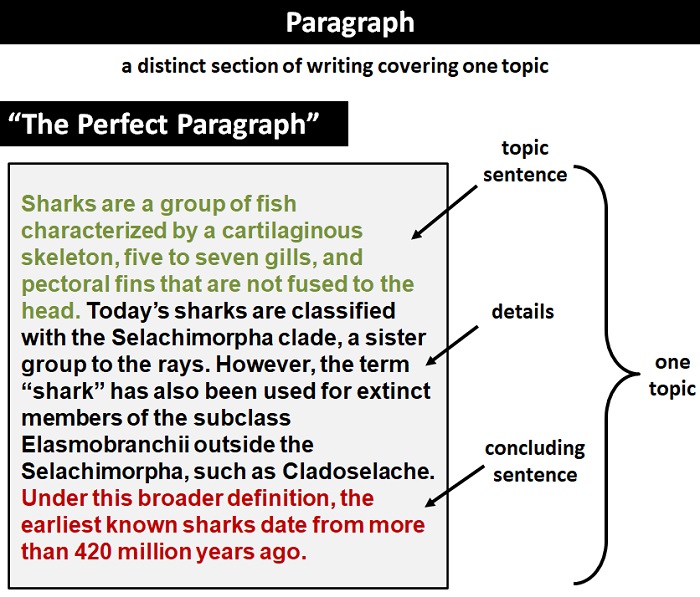A paragraph is a component of fictional prose and non-fiction writings.
When writing essays, research papers, books, etc., new paragraphs are indented to show their beginnings. Each new paragraph begins with a new indentation.
The purpose of a paragraph is to express a speaker’s thoughts on a particular point in a clear way that is unique and specific to that paragraph. In other words, paragraphs shouldn’t be mixing thoughts or ideas. When a new idea is introduced, generally, a writer will introduce a new paragraph.

Basic Paragraph Structure: How to Layout a Paragraph
In non-fiction writing, a body paragraph is any paragraph that comes between the introduction and the conclusion.
A good body paragraph will have the following:
Topic Sentence

What is a topic sentence?
A topic sentence is the first sentence of the body paragraph. Simply put, the topic sentence introduces the topic of the paragraph. A good topic sentence will be broad enough to allow for explication but narrow enough that it does not require a paragraph that is too long.
Supporting Sentences
What is a supporting sentence?
The supporting sentences of a paragraph are the sentences between the topic sentence and the concluding sentence. The supporting sentences “support” the topic sentence. That is, they explain and elaborate on the point of the paragraph.
Concluding Sentence

What is a concluding sentence?
The concluding sentence is the last sentence in the paragraph. It should succinctly end the paragraph and transition to the next paragraph, if appropriate.
Summary: What are Paragraphs?
Define paragraph: the definition of a paragraph is a group of sentences in which a single topic is developed.
In summary, a paragraph is:
- a unit of writing
- used in non-fiction and fictional prose
- a part of writing that expresses a certain topic
